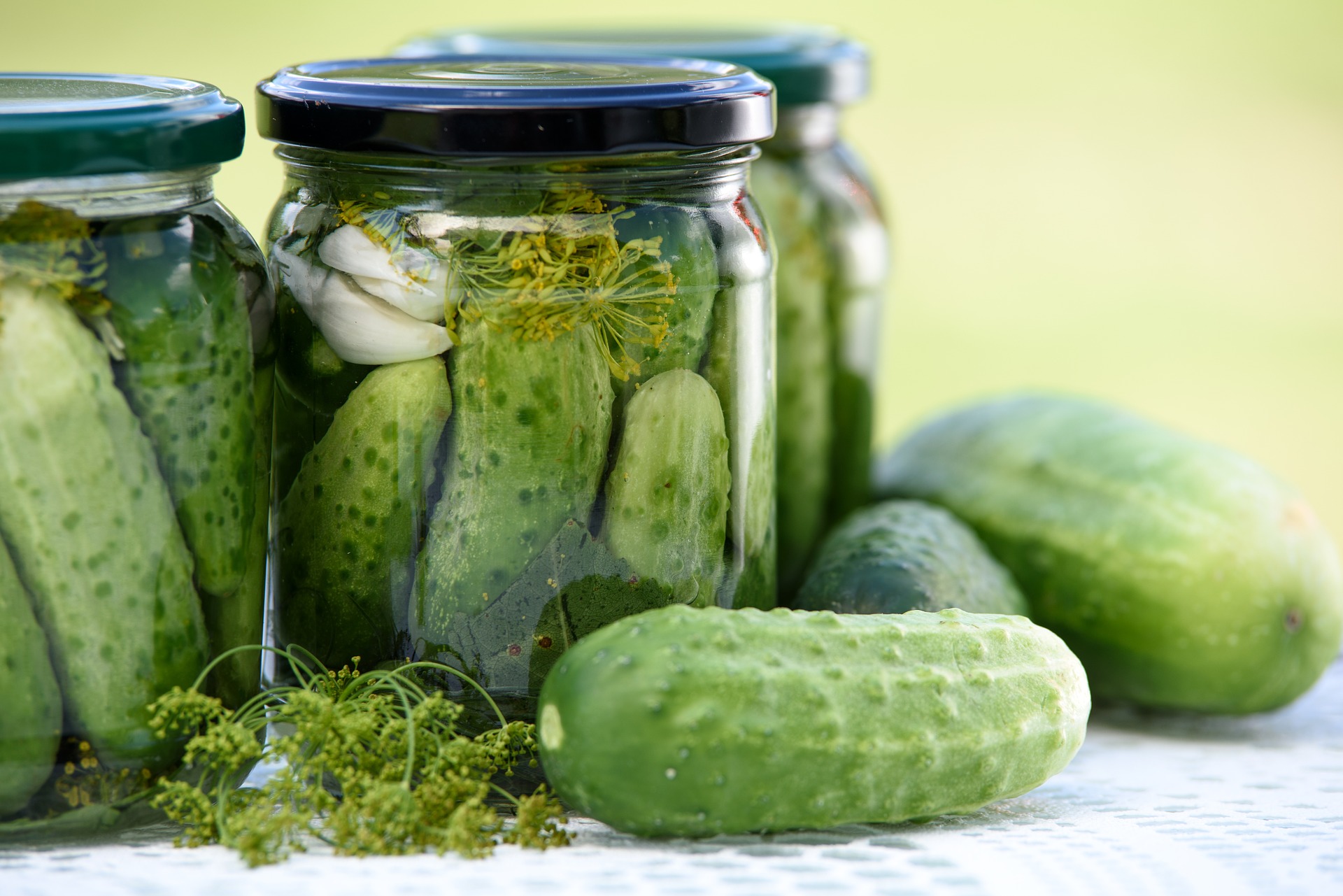


A Note From the Chef:
First, a quick history lesson on pickles. Dating as far back as 2030 BC, pickles have been around for four thousand years. With no refrigeration, pickling was a necessity allowing food to be stored for longer periods of time. By adding a “Brine”-salt or vinegar solution- to the pickles, harmful bacteria could not grow, and food stayed fresh from spoilage. The word pickle comes from the Dutch word pekel or northern German word pokel.
Fun fact #1: It is said that Cleopatra ate pickles as a beauty aid.
Going forward a couple thousand years, in 1492, Christopher Columbus introduced them to North America. Not only were they delicious, they helped stave off scurvy on the voyage. By the turn of the 19th century, a heavy influx of eastern European Jews (enter Kosher dill!) made them a New York City staple. At about the same time, H.J. Heinz introduced them at the 1898 World’s Fair and, with arguably the best marketing campaign ever, launched pickles into what would literally became a household staple.
Fun fact #2: Americans consume about 20 billion pickles a year. Yea, that’s a billion with a “B”!
Today pickles have become chic. You’ll find them in cocktails, diets and in the trendiest restaurants. I’m sure your friends have also suggested drinking pickle juice! In fact, drinking pickle juice has become a thing. The truth is, that for healthy adults, drinking the juice is beneficial for the gut as it is a probiotic and aids in digestion due to its live bacteria. However, folks with hypertension should steer away from this practice due to its high sodium content!
Fun fact #3: November 14th is National Pickle Day
Lastly, cucumbers aren’t the only vegetable for pickling. You can pickle nearly and vegetable and some fruits (watermelon rind). You can “quick pickle” many of your favorite vegetables right in your own refrigerator. Below are two easy recipes to get you started on your pickle journey! You can add these to sandwiches, salads, ice cream(!?!) charcuterie platters or, like me, eat them straight out of the jar!
Enjoy!
Quick Pickle Brine
1 cup water
1/3 cup vinegar (white wine, apple, rice, etc.)
2 tablespoons sugar
2 teaspoons salt
2 cups cucumbers, sliced 1/4” (I prefer Persian ones, if you can find them) *Or, use your favorite vegetable like, cauliflower, green or wax beans, bell peppers, etc.
½ cup white or yellow onion, sliced *optional ( you can use red onion but, it will turn your liquid pink)
Pinch chili flake *optional
DIRECTIONS
Place all ingredients in a glass container in the fridge. It will be great in an hour and last 3-5 days. After that, the veggies may get too soft. (You can reuse the brine 2-3 times)
Vietnamese Pickled Vegetables
Makes 3 cups
1 large carrot, peeled and cut into thick matchsticks
1 pound daikons, each no larger than 2 inches in diameter, peeled and cut into thick matchsticks
1 teaspoon salt
2 teaspoons plus 1/2 cup sugar
1 1/4 cups distilled white vinegar
1 cup lukewarm water
DIRECTIONS
1. Place the carrot and daikons in a bowl and sprinkle with the salt and 2 teaspoons of the sugar. Use your hands to knead the vegetables for about 3 minutes, expelling the water from them. They will soften and liquid will pool at the bottom of the bowl. Stop kneading when you can bend a piece of daikon so that the ends touch but the daikon does not break. The vegetables should have lost about one-fourth of their volume. Drain in a colander and rinse under cold running water, then press gently to expel extra water. Return the vegetables to the bowl if you plan to eat them soon or transfer them to a 1-quart jar for longer storage.
2. To make the brine, in a bowl, combine the 1/2 cup sugar, the vinegar, and the water and stir to dissolve the sugar. Pour over the vegetables. The brine should cover the vegetables. Let the vegetables marinate in the brine for at least 1 hour before eating. They will keep in the refrigerator for up to 4 weeks. Beyond that point, they get tired.
Chef's Tips: